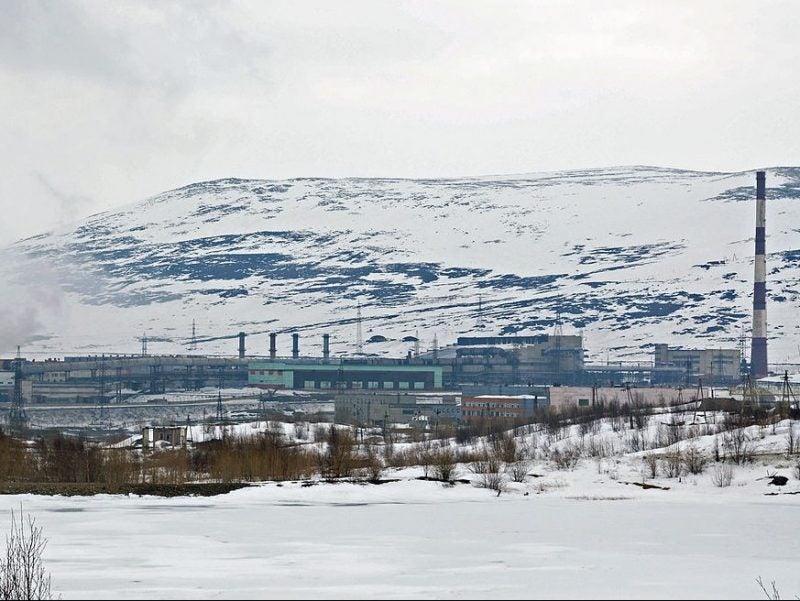
Umar Ali (UA): Can you give me a brief overview of Nornickel’s efforts to work on environmentally sound and renewable technologies?
Sergey Dyachenko (SD): It’s actually the combination of two programmes. One program is our gradual reduction of sulfur dioxide emissions at the Russia-Norway border through a 50% reduction of smelting operations at our old nickel refineries, with a complete shutdown of the smelters by 2021.
We are going to explore various options to fully utilise our capacity at Nornickel. This includes smelting our concentrates and also exploring the markets for these concentrates. In order to do that we’ve had to spend two years developing technology to make our concentrates more marketable, and more user-friendly for other types of smelting, through upgrades to our concentrator and the shutdown of out electrical furnaces.
This ties into our operations at Monchegorsk, where we have a quite old copper smelter that we will shut down by 2021 without a loss in production. And that will actually bring sulphur dioxide emissions at the Kola Peninsula close to zero.
There’s also the Norilsk concentrator, which slightly different story. It’s on the Taimyr Peninsula, which is very far from any railway or roads.
We therefore spent quite a lot of time time developing potential options for capturing sulphur dioxide emissions at the copper plant and smelter. We made a decision to capture gases at Nadezha for sulphuric acid production, along with neutralisation facilities. The construction has started, we’re working on contracts for seven construction companies, and that’s going to be done by the end of 2022.
This is going to bring our sulphur dioxide emissions down by 25%. Later on, we might actually explore installing gypsum storage but this programme is expected to go up to 2025. We’re pushing for a 45% reduction by 2023 and 95% by 2025.

US Tariffs are shifting - will you react or anticipate?
Don’t let policy changes catch you off guard. Stay proactive with real-time data and expert analysis.
By GlobalDataWe’re also working to reduce other greenhouse gases across our operations- 44% of our energy comes from renewable sources, including two hydropower stations, and the rest of our power generation units actually run on natural gas.
UA: Nornickel is also working with The United Nations Industrial Development Organization to explore environmentally sound technologies. Has anything interesting come from this?
SD: We’re trying to diversify production, developing products besides cathodes and we decided to try and diversify into the battery business.
We made a deal with [German chemical company] BASF; we will provide cobalt and nickel solutions, and BASF will produce the batteries. This is a new approach for us, and in the future we will see the majority of our metal going into chemistry rather than into stainless steel production.
So that’s how we’re going to contribute towards the environmental future – by providing the metal for batteries in electric cars.
UA: What are the biggest challenges in implementing these changes?
SD: With mining activities and their environmental footprint, we obviously want to use new technology such as electric vehicles.
The challenge is that not all these technologies are sufficiently advanced yet and they take a while to be fully developed, which is why we’ve set goals for 2022 and 2023.
UA: Is the resources sector as a whole doing enough to help reduce emissions?
SD: As I mentioned, the technology is important for us as a manufacturer, but it also drives changes. The more demand for renewable vehicles and technologies, the quicker you’ll see changes in outlook of the mining industry.
UA: What is the most exciting technology going forward for the resources sector?
SD: The most exciting technology for me is electrical vehicles, which will pave the way for autonomous equipment. I know mining companies are planning fully autonomous mines underground as deep as 2000 metres.
As a concentrating business, it’s also exciting to see autonomous concentrators drive operations. This could reduce the impact on the environment as well through the reduction of our carbon footprint. Another exciting technology is hydrogen metallurgy, and new projects we’re working on to replace equipment such as furnaces.
UA: What would be the most important thing for the resources sector to focus on to reduce its environmental impact?
SD: As I mentioned, where it’s possible, hydrogen metallurgy will be important. That’s going to remove sulphur dioxide and carbon dioxide emissions and facilitate the use of electrical.
Another important thing to focus on would be water- we’re currently working towards about 95% recycled water. Even in working environments where water is not readily available, it’s important to try and reutilise water- all our new projects are actually focused on reusing water for our technological needs.



